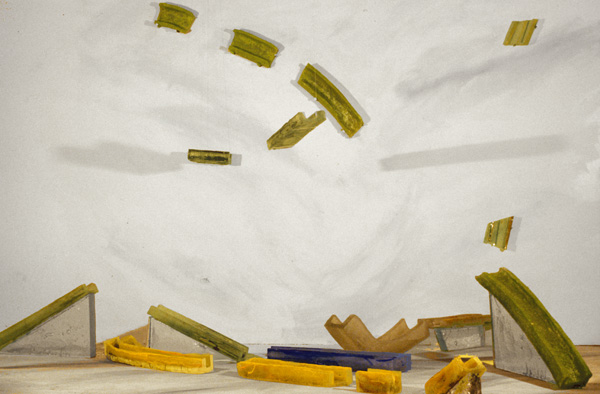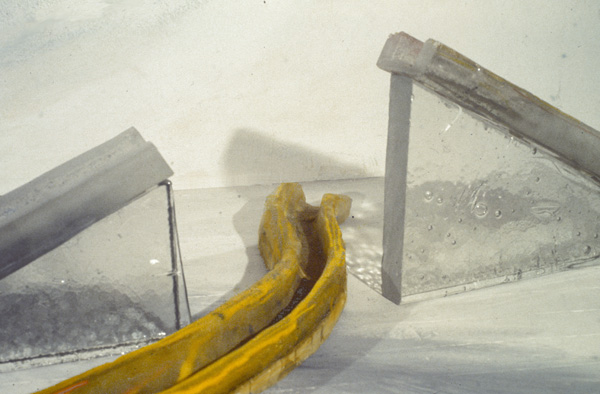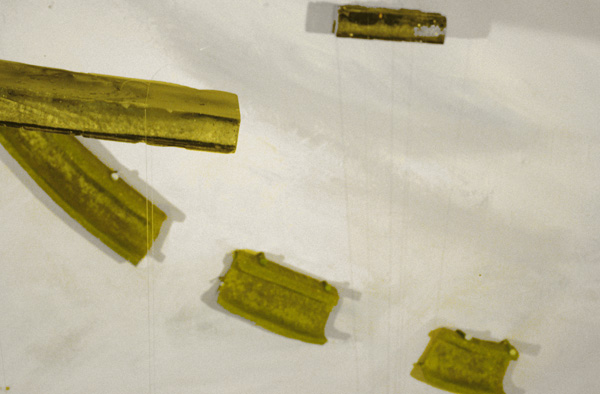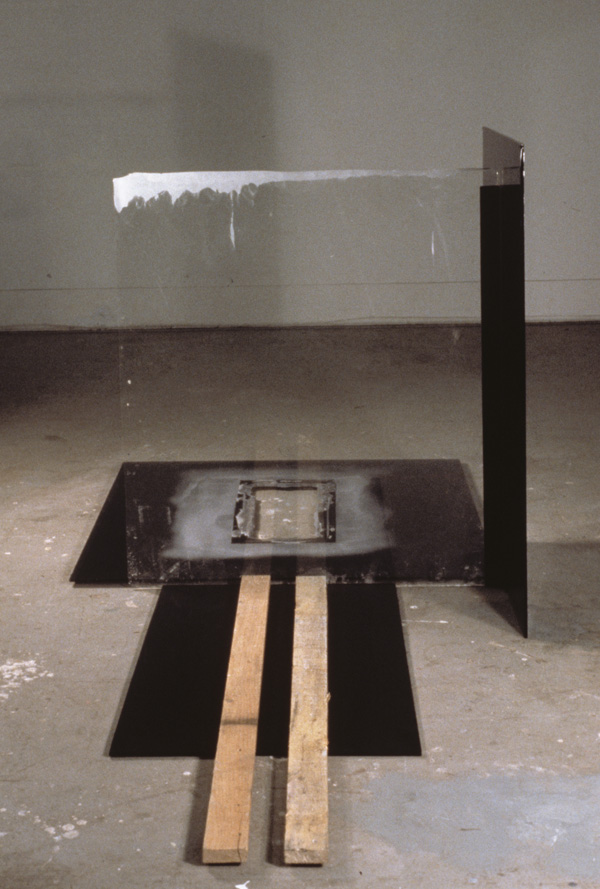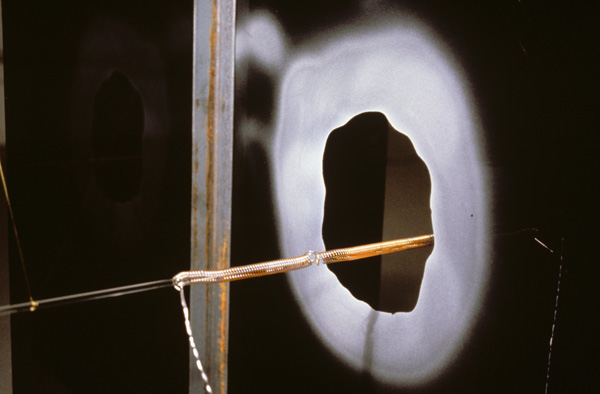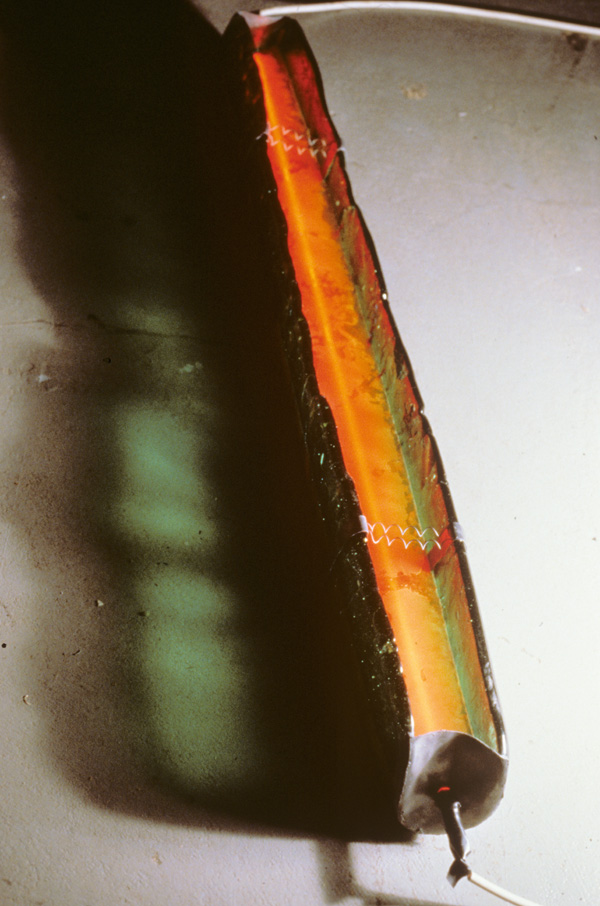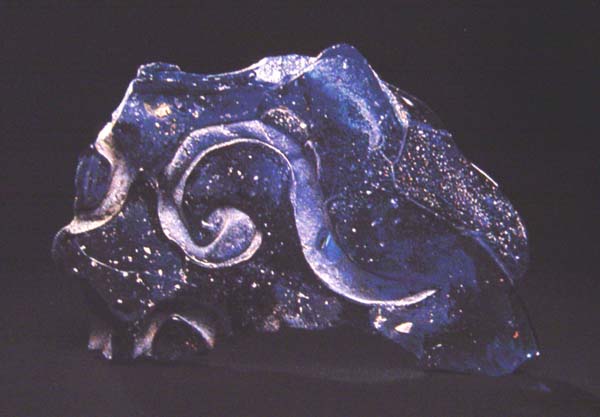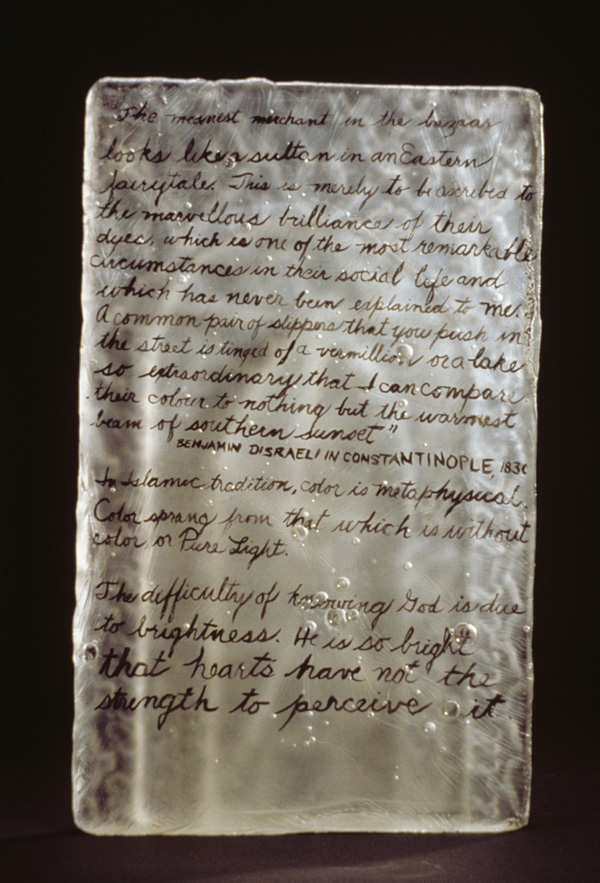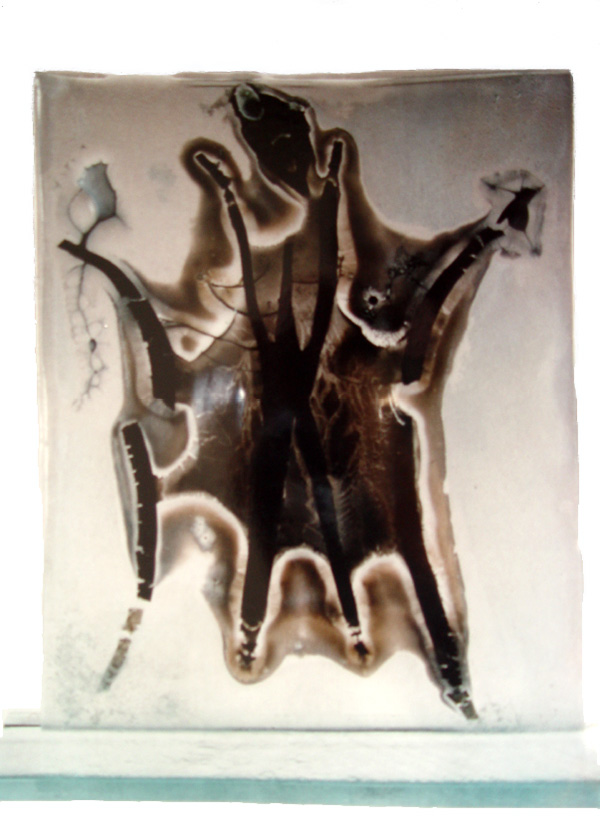The Invisible
cast glass
dimensions variable
________________________________
The Invisible, detail
cast glass
dimensions variable
________________________________
The Invisible, detail
cast glass
dimensions variable
________________________________
Lassitude of the Finite I
black glass, water, phosphorescent paint
H. 7″ W. 17″ D. 17″
________________________________
Lassitude of the Finite II
black glass, clear glass, wood
H. 30″ W. 30″ D. 86″
________________________________
Lassitude of the Finite III, frontview
black glass, galvanized tubing
H. apx. 48″
________________________________
Lassitude of the Finite III, sideview
black glass, galvanized tubing
H. apx. 48″
________________________________
Lassitude of the Finite IV
black glass, rusting iron water pipe
H. apx. 40″
________________________________
Lassitude of the Finite V
black glass, cinder block, pipe, glass
H. apx. 24″
________________________________
At the Core
black glass, sandblasting, red-hot nichrome wire, pyrex rod, infinite control switch
H. 33″ W. 30″ D. 30″
________________________________
At the Core, detail
black glass, sandblasting, red-hot nichrome wire, pyrex rod, infinite control switch
________________________________
Primordial/Underived I
cast glass, liquids, neon, lead
H. 5″ L. 48″ W. 6″
________________________________
Primordial/Underived I,
closeup of trough, cast glass, liquids, neon, lead
________________________________
Primordial/Underived I,
without ambient light, cast glass, liquids, neon, lead
________________________________
Primordial/Underived II
cast glass, liquids, neon, lead, salt, steel, nichrome wire
H. 9″ L. 96″ W. 48″
________________________________
Transmission
cast glass, metal
H. 10″ W. 10″ D. 1″
________________________________
Techno-Virus
stainless steel, cast glass, fourescent bulbs, nichrome wire embedded-into-cast glass, light ballast, flourescent light starters
H. 54″ W. 28″ D. 4″
________________________________
Glass-lined Box
cast glass, wood
H. 10″ W. 10″ D. 2″
________________________________
Cultural Spinal Tap; Anesthetic Injection
cast glass, copper wire, flourescent light, ballast, starter, salt
H. 81″ W. 8″ D. 3″
________________________________
Orbic Energy
cast glass, steel
H. 14″ Diam. 88″
Cast glass orbs available individually
________________________________
Infinite Fragment II
cast cobalt glass
H. 5″ W. 8″ D. .75″
________________________________
Infinite Fragment I
cast cobalt glass
H. 11″ W. 9″ D. 1″
________________________________
Islamic Prayer Niche, 1989 (Frontside)
mold-cast glass, India ink
H. 28″ W. 20″ D. 4″
Islamic Prayer Niche, 1989 (Frontside)
________________________________
Islamic Prayer Niche, 1989 (Backside)
mold-cast glass, India ink
H. 28″ W. 20″ D. 4″
Islamic Prayer Niche, 1989 (Backside)
According to writer Edward Said, referring specifically to Disraeli’s perspective, romantic idealization often serves to emphasize difference between peoples. Disraeli’s snapshot, though genteel, epitomizes the West’s surface gaze, which as a pattern of observation over time has lead to a collective inability to understand non-European cultures in any depth. Former novelist and British Prime Minister Benjamin Disraeli’s still influential words of visual appreciation written while traveling in Constantinople (now Istanbul) in 1830, betray a voyeuristic and materialistic point of view on the subject of color as he delights in Ottoman culture through an exotic lens. Through this work, our fragile cultural memory is challenged to make connections between fragmented bits of history.
In contrast, the statement below Disraeli’s establishes an interpretation of color from Islamic tradition and acts as a sign of Westerners disinterest in accepting, in learning about, or in seeing other cultures as they see themselves.
________________________________
Measuring the Invisible II
glass,cellopahne, tape measure
H. 14″ W. 12″ D. 8″
________________________________
Sample Uki A
glass, masking sheet
H. 31″ W. 7.5″ D. .25″
________________________________
Birthing Body
fused glass, cast glass base
H. 15.5″ W. 9″ D. 3″ with base
________________________________
Rapid Rupture
fused glass, cast glass base
H. 10″ W. 7.5″ D. 2.25″
My first personal “peace memorial,” an homage to Hiroshima and Nagasaki, “Rapid Rupture” was created’ in the mid 1980’s. J. Robert Oppenheimer was given the title “Coordinator of Rapid Rupture,”specifically referring to the propagation of a fast neutron chain reaction in an atomic bomb.
This work was in part a direct cathartic outgrowth of the neo-expressionist movement in particular because I was at that time studying with Bay Area artist Oliver Jackson, an important practitioner of that style.
________________________________
At the Core (study)
glass, nichrome wire, salt, steel
H. 60″ W. 8″ D. 2.5″
Return to top of GLASS Page
